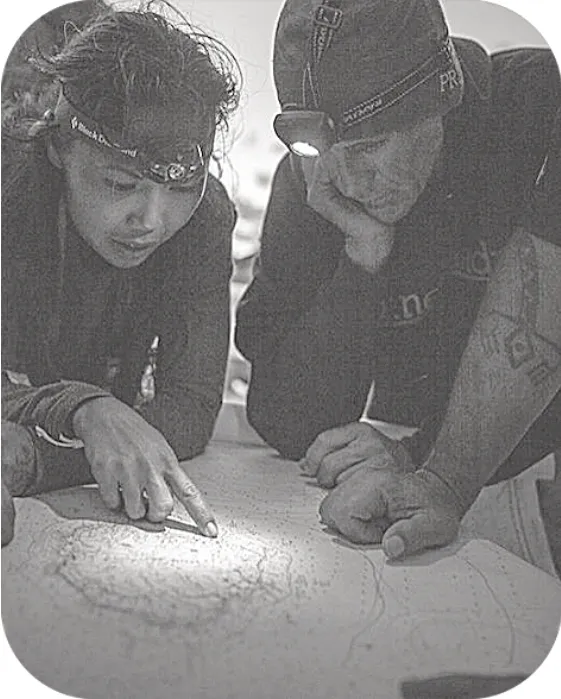Finding our way on the voyage
主题语境:海上航行篇幅:364词建议用时:7分钟
1Kala's ancestors navigated (航行) the ocean for centuries using their knowledge of the stars,the sun,the currents and the wind.It's not that she does it in a canoe (独木舟)without technology,but rather uses the natural technology around her.It's called Wayfinding,and was taught to her by her father.
2“My father is my foundation,my rock.” Kala said of her first voyage with him from Oahu to Lahaina in a traditional canoe.He taught her how to read the stars,the ocean swells and how to use them to hold the course.“Over 200 stars have specific names and purposes when you are finding your way.You have to look at each and determine if they are rising or setting.You know this star and the direction it represents.If you can do that,you can use it as a tool to find your direction,” Kala added.
3Kala sailed the canoe in the ocean for up to three weeks.During the day,Kala used the sun until it hit a certain height.When she got closer to land,she looked for certain species of land birds and clouds that indicated there was land below.When Kala sailed,she felt very connected to the crew and the canoe.“We're a family,” she said.The longer voyage required Kala to spend hours studying the day and the night skies.It was demanding physical work.But it also had its moments of awe.For Kala,the beauty was in tying together the past and the present to enjoy the moment.So when she was not sailing,she was teaching Wayfinding skills to school-aged children in the hope of preserving the skills her ancestors relied on.

4It's easy to be lost in the immediacy(即时性)of the technology of our day,to be consumed by screens and miss the nature that unfolds around us.But if we take the time to look up,to see the stars and the sun,the way the clouds move,the miracle of life beneath and above us,we will discover something deep inside us,something that will always lead to happiness.
Reading
Check
1.How did Kala navigate the ocean in a canoe?
A.By observing the natural elements around.
B.By following the course of ocean currents.
C.By using hi-technology navigation devices.
D.By recalling the first voyage with her father.
2.What does the underlined word “they” in paragraph 2 refer to?
A.Rocks.
B.Canoes.
C.Stars.
D.Voyages.
3.What did Kala think of the three-week canoe voyage?
A.It was a heroic adventure.
B.It brought great joy to her life.
C.It was school children's favorite.
D.It represented a kind of innovation.
4.What does the author suggest we do?
A.Enjoy the screens.
B.Explore the universe.
C.Get close to nature.
D.Keep the earth clean.
Language
Study
Ⅰ.日积月累
naturaladj.自然的
teachv.教
voyagen.航行
traditionaladj.传统的
purposen.意图;目的
specificadj.特定的
demandingadj.要求高的;费力的
awen.敬畏;惊叹
preservev.保护
hold the course 循正确道路前进
in the hope of 希望
be lost in 迷失
Ⅱ.单句填空
1.The purpose________the book is to provide a complete guide to the university.
2.He teaches English________advanced students.
3.Their lifestyle is very________(tradition).
4.The work is physically________(demand).
5.My hair soon grew back to its________(nature)colour.

